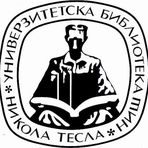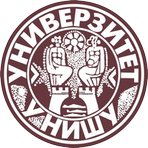Title
Revizija finansijskih izveštaja u uslovima primene računovodstva fer vrednosti
Creator
Rupić, Bojan Z. 1982-
Copyright date
2016
Object Links
Select license
Autorstvo-Nekomercijalno 3.0 Srbija (CC BY-NC 3.0)
License description
Dozvoljavate umnožavanje, distribuciju i javno saopštavanje dela, i prerade, ako se navede ime autora na način odredjen od strane autora ili davaoca licence. Ova licenca ne dozvoljava komercijalnu upotrebu dela. Osnovni opis Licence: http://creativecommons.org/licenses/by-nc/3.0/rs/deed.sr_LATN Sadržaj ugovora u celini: http://creativecommons.org/licenses/by-nc/3.0/rs/legalcode.sr-Latn
Language
Serbian
Cobiss-ID
Theses Type
Doktorska disertacija
description
Datum odbrane:19.09.2016.
Other responsibilities
mentor
Bonić, Ljiljana
član komisije
Stojilković, Milorad
član komisije
Jakšić, Dejan
Academic Expertise
Društveno-humanističke nauke
University
Univerzitet u Nišu
Faculty
Ekonomski fakultet
Group
Katedra za opštu ekonomsku teoriju
Alternative title
An audit of financial statements in the context of fair value accounting
Publisher
[B. Z. Rupić]
Format
[13], 248 listova
description
Biografija: list 248
description
Аudit of financial statements
Abstract (en)
Over the last decade historical cost accounting have been moving
toward the fair value accounting. The need to express assets at fair
value occurs as a result of the deficiencies of traditional accounting
solutions for valuation at cost, and as a result of the fact that the
stating something at fair value allows the recognition of income and
gains that have not yet been achieved, which improves the financial
position and financial performance of the business entity. The use of
fair value accounting greatly contributed to creating increased
financial performance, artificially increased profits and dividends in
the financial statements of business entities that incorrectly applied
this method, or it came as a result of inherent limitations in the
application of this method in different market conditions.
This puts an auditor in a very complex and challenging situation,
because the auditor is ecxpected to adequately express his opinion,
even under new circumstances. A high inherent risk is something that
the audit of accounting estimates, including fair value estimate, is
characteristic for since the fair value valuation occurs as a result of
judgment.
This paper presents possible audit procedures for fair value
measurements and related disclosures, and experience of auditors
worldwide in the period before and after the economic crisis at the
beginning of the 21st century, it also examines the views of auditors
on these issues through a questionnaire in the context of empirical
research, and it suggests the possibility of improving the audit of the
financial statements in the Republic of Serbia in the context of fair
value accounting.
Audit of financial statements in the context of fair value accounting in
the Republic of Serbia can be improved through intensive
professional training of auditors of measuring assets and liabilities at
fair value, and through development of new audit procedures that
fully take into account the specifics of the environment of the
Republic of Serbia, but which are based on the audit procedures used
in other countries. It can also be improved through expanding audit
teams with experts in the field of assessment, as well as through better
cooperation and communication between external auditors and
internal auditors.
Authors Key words
revizija finansijskih izveštaja, računovodstvo fer vrednosti,
revizijske procedure, procene, MRS/MSFI, Međunarodni
standardi revizije
Authors Key words
audit of financial statements, fair value accounting, auditing
procedures, assessment, IAS / IFRS, ISA
Classification
657.6(043.3)
Subject
S180
Type
Elektronska teza
Abstract (en)
Over the last decade historical cost accounting have been moving
toward the fair value accounting. The need to express assets at fair
value occurs as a result of the deficiencies of traditional accounting
solutions for valuation at cost, and as a result of the fact that the
stating something at fair value allows the recognition of income and
gains that have not yet been achieved, which improves the financial
position and financial performance of the business entity. The use of
fair value accounting greatly contributed to creating increased
financial performance, artificially increased profits and dividends in
the financial statements of business entities that incorrectly applied
this method, or it came as a result of inherent limitations in the
application of this method in different market conditions.
This puts an auditor in a very complex and challenging situation,
because the auditor is ecxpected to adequately express his opinion,
even under new circumstances. A high inherent risk is something that
the audit of accounting estimates, including fair value estimate, is
characteristic for since the fair value valuation occurs as a result of
judgment.
This paper presents possible audit procedures for fair value
measurements and related disclosures, and experience of auditors
worldwide in the period before and after the economic crisis at the
beginning of the 21st century, it also examines the views of auditors
on these issues through a questionnaire in the context of empirical
research, and it suggests the possibility of improving the audit of the
financial statements in the Republic of Serbia in the context of fair
value accounting.
Audit of financial statements in the context of fair value accounting in
the Republic of Serbia can be improved through intensive
professional training of auditors of measuring assets and liabilities at
fair value, and through development of new audit procedures that
fully take into account the specifics of the environment of the
Republic of Serbia, but which are based on the audit procedures used
in other countries. It can also be improved through expanding audit
teams with experts in the field of assessment, as well as through better
cooperation and communication between external auditors and
internal auditors.
“Data exchange” service offers individual users metadata transfer in several different formats. Citation formats are offered for transfers in texts as for the transfer into internet pages. Citation formats include permanent links that guarantee access to cited sources. For use are commonly structured metadata schemes : Dublin Core xml and ETUB-MS xml, local adaptation of international ETD-MS scheme intended for use in academic documents.


